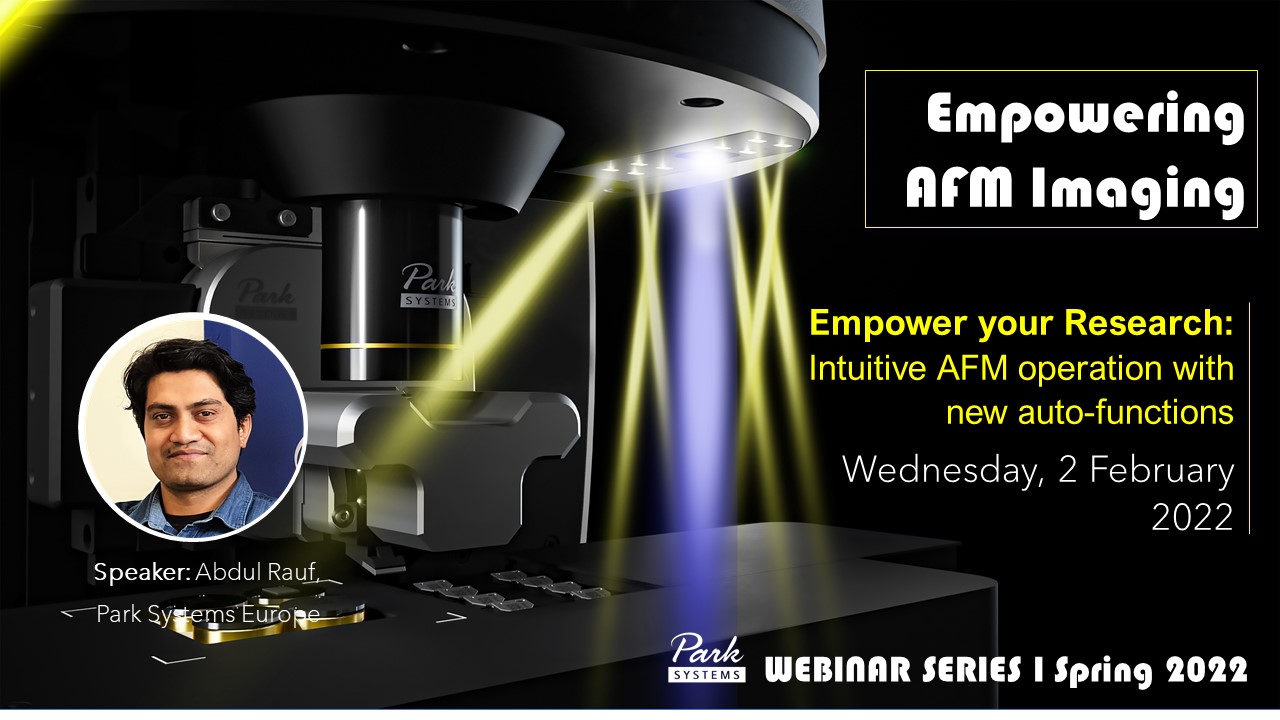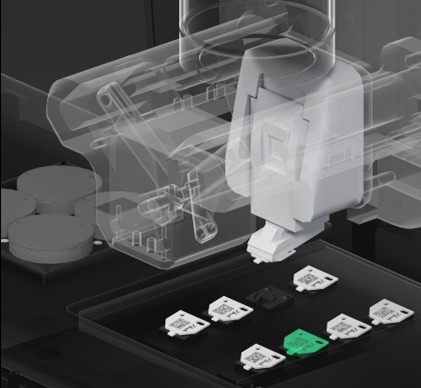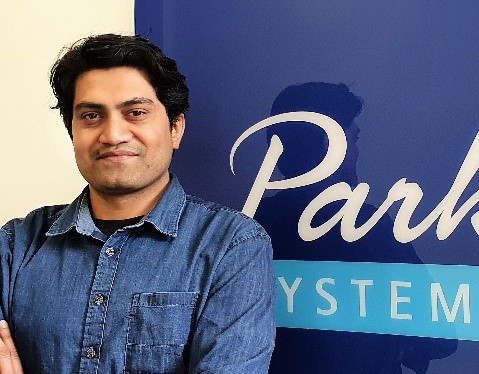
Empowering your Research: Intuitive AFM operation with new auto-functions
Wednesday, 2 February 2022
-
10:00 am – 11:00 am
(GMT)
London, Dublin -
11:00 am – 12:00 pm
(CET)
Berlin, Paris, Rome -
19:00 pm – 20:00 pm
(UTC+9)
Seoul, Tokyo

Check out all webinars from the Empowering AFM Imaging series
here.
Atomic Force Microscopes are versatile tools for academic and
industrial research labs. Park Systems’ AFMs can achieve real-space
images with sub-nanometer resolution over large areas. Functional
properties such as electrical current, work function, piezoelectric
response, and Youngs modulus can also be mapped with nanometer
resolution.
Although AFMs can generate excellent insightful data, setting up an
AFM experiment can take up to an hour depending on complexity of the
experiment. Additionally, when analyses of several functional
properties are required, the user must also change the cantilever
probe and possibly the hardware configuration of the instrument as
well.
In this webinar, I will show how these problems are solved with Park
Systems’ next generation FX40 AFM. The user only loads samples and
several cantilevers in the AFM at once and the rest can be
controlled via the SmartScan software. I will demonstrate these
powerful features of the FX40 by imaging several common types of AFM
samples, using different imaging modes and cantilevers.

Presented By :
Abdul Rauf, Application Scientist at Park Systems
Europe
Abdul is an Application Scientist at Park Systems Europe, where he supports development of AFM solutions for customers. He had his training as a polymer materials’ engineer with emphasis on elastomer blends and composites. Abdul has expertise in characterization of macromolecular systems at interfaces. He worked on his doctoral thesis in the group of Prof. Jürgen P. Rabe in Humboldt-Universität zu Berlin, where he acquired expertise in morphological and nanomechanical characterization of thin films confined in interfaces. His work in Berlin also included study of two-dimensional materials such as monolayers of Graphene, Hexagonal Boron Nitride, and Transition Metal Dichalcogenides as sensors for strain transfer across atomic interfaces.
